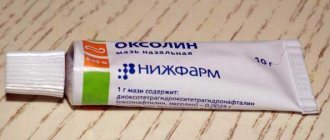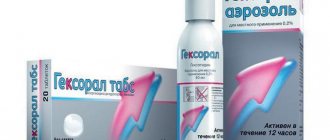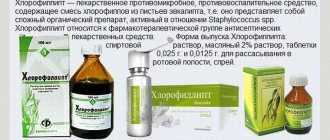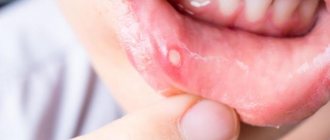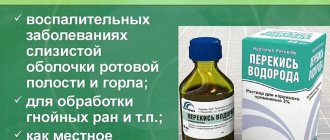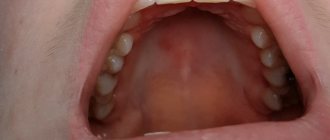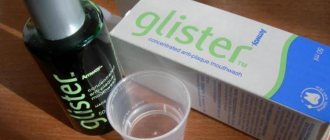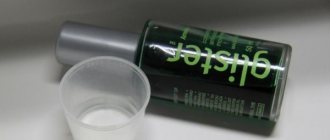With chickenpox
| A runny nose is one of the most common symptoms of ARVI. It is advisable to start therapy aimed at combating the causative virus from the first hours of the disease. The virus, having entered the body, begins to multiply rapidly, and the sooner the fight begins to eliminate it, the easier the disease can progress. As soon as your throat becomes sore and nasal discharge begins to bother you, it is advisable to immediately begin treatment. VIFERON gel strengthens local immunity and blocks the multiplication of the virus, which helps cope with the disease and its symptoms. |
For stomatitis
| The use of the drug for stomatitis (damage to the oral mucosa) caused by herpetic infection helps strengthen local immunity, as well as combat the multiplication of the virus in cells. Since the gel has a consistency that can retain its shape and has elasticity and plasticity, it promotes maximum absorption of active substances into the site of inflammation, stopping it. To treat stomatitis, the drug must be applied to the affected areas 3-5 times a day for 5-6 days. |
For condylomas
| To combat the human papillomavirus and its manifestations in the form of condylomas, the drug VIFERON Suppositories (suppositories) is used. The recommended dose for adults is 500,000 IU, 1 suppository 2 times a day every 12 hours every day for 5-10 days. According to clinical indications, therapy can be continued. You can read more about this in scientific articles and in the “For Specialists” section. |
For the flu
| Human recombinant interferon alpha-2b with antioxidants, which are part of the drug, helps fight influenza and other acute respiratory viral infections at any stage of the disease. It has a powerful antiviral effect and allows you to shorten the overall duration of the disease, quickly cope with the manifestations of infection (runny nose, cough, weakness, fever, etc.), and also reduces the likelihood of developing complications and subsequent diseases. |
For the prevention of viral diseases
| Since cold and flu viruses most often enter the body through the nose, it is important to block the path to infection at this point. To do this, you need to apply a drug to the nasal mucosa that is convenient and easy to use. VIFERON Gel forms a thin protective layer that prevents the possible penetration of viruses and strengthens local immunity. The drug has a prolonged effect, so for prevention it is enough to apply the gel to the nasal mucosa only 2 times a day. |
How is stomatitis treated with Viferon?
The medicine for each patient, as well as recommendations for the therapeutic course, are prescribed by the doctor, based on the examination, general condition and age of the patient. Gels and ointments are prescribed for severe pain. These forms are considered the most effective in direct contact with open wounds and are characterized by analgesic properties.
Gels and ointments are easy to treat affected areas and evenly distribute the composition over problem areas.
In dentistry, this pharmaceutical drug is used mainly to eliminate herpetic stomatitis. Many people overlook one important point - inflammation of the epithelium of the mucous membrane can be triggered by bacteria or allergies. In these cases, the use of antiviral drugs (which include Viferon) is fraught with a deterioration in the patient’s well-being.
The therapeutic course can be either systemic or local. Taking this into account, the following forms of medication are prescribed for the treatment of chronic or acute herpetic stomatitis:
- rectal suppositories are the best option for infants and young children;
- ointment - suitable for all patients if the disease is localized on the lips or skin;
- gel is the optimal choice for inflammation of the mucous membrane and mouth ulcers.
The latter form is considered universal because it is suitable for all ages and provides relief from the disease in a few days.
Herpetic stomatitis
Acute stomatitis is treated with antiviral drugs. If we are talking about a chronic form of the disease, then complex therapy is carried out including immunomodulators. Medicines against herpes are produced in the form of gels, creams, ointments and suppositories. Creams and ointments are used for external treatment of inflammation.
Viferon gel for stomatitis is prescribed in cases where we are talking about lesions of the mucous membrane localized in the oral cavity. The main active ingredient of the drug is interferons with pronounced antiviral and immune-stimulating effects, “working” in conjunction with vitamins C and E.
Often, to eliminate the disease, drug treatment is supplemented with lotions and rinses. Many children under the age of 3 have problems with mouth rinsing, so for them, a gel is the best way out of the situation.
Viferon for stomatitis in children
Effective treatment of stomatitis in children involves targeted local exposure and regular rinsing of the mouth. But since a child is often unable to rinse his mouth independently before the age of 3, doctors have to limit themselves to only medicinal components. In such cases, Viferon gel outperforms most ointments for a number of reasons:
- the composition of the gel is characterized by an analgesic effect;
- the medication quickly cleanses the mucous membrane of necrotic tissue;
- the drug actively inhibits pathogenic viral cells;
- activates regeneration of both the mucous membrane and damaged epithelium.
The gel is much preferable to ointment also because it acts directly on the lesions; the course of treatment for herpetic stomatitis ranges from 5 to 10 days. In children, the ointment does not have time to “fix” on the problem area, since it is absorbed extremely slowly, it is often simply licked off by the child. The gel acts directly on the lesions of the mucous membrane, immediately after application.
The difference between the drug VIFERON Gel and the drug VIFERON Ointment: which is better
| • | The similarity between gel and ointment is that they are products for external use and are intended for application to the surface of the skin and mucous membranes. |
| • | Differences: the gel has a soft and viscous consistency of a hydrophilic water-based product that does not contain fats and oils, so it quickly manifests its properties on the mucous membranes. And VIFERON Ointment is created on a fatty (hydrophobic) basis containing petroleum jelly and lanolin, so it is easily absorbed into the skin. |
| • | To the question “Which is better?” there is no clear answer. Both gel and ointment have their advantages. |
Description of the drug
Viferon gel has all the advantages characteristic of liniment, but provides much better results due to rapid absorption by the problem area (it has a “lighter” glycerin base). The ointment is made on a Vaseline basis, it is denser and thicker in consistency.
Viferon gel is actively used for the treatment of stomatitis in both adults and children.
Gel Viferon can be used for preventive purposes. It is prescribed during pregnancy, breastfeeding and infants under 1 year of age. For the form in question there are no age criteria or restrictions on use.
Clinical and pharmacological group
Viferon is an interferon and belongs to the therapeutic group of MIBP-cytokines. The drug is characterized by a pronounced antiviral and immunomodulatory effect. The components of the medication suppress the activity of herpes viruses (Herpes Simplex) and stimulate the phagocytic function of neutrophils in problem areas.
pharmachologic effect
The high effectiveness of the pharmaceutical agent in the fight against herpetic diseases of the oral cavity is due to the activity and interaction of several active substances at once.
- Interferon type alpha-2b is characterized by immunomodulatory properties: it forms increased cytotoxicity of lymphocytes to pathogenic cells, enhances the phagocytic activity of macrophages. Prevents the replication of DNA that contains viral agents.
- Alpha tocopherol acetate – increases the resistance of healthy cells to viral microorganisms by stabilizing their membrane structure. The antioxidant in question quickly eliminates swelling and triggers regenerative biochemical processes.
- Ascorbic acid increases the efficiency of the patient’s immune system and accelerates the body’s response to viral agents. The effect is achieved by increasing the secretion of class A immunoglobulins.
The drug helps reduce therapeutic doses of hormonal and antibacterial medications during complex therapy. The gel form allows you to prolong the action of the components.
Release form and composition
The gel is a gel-like opaque mass with a uniform consistency of medium viscosity. The composition has a white-gray tint. Available in 12 ml aluminum tubes and polystyrene jars of the same volume. The pharmaceutical product is supplied in cardboard boxes and includes instructions for use.
Composition of the drug, 1 g:
- Alpha-tocopherol acetate
interferon Alpha-2b (recombinant type) – 36,000 IU – main active ingredient; - methionine – 1.2 mg;
- sodium chloride – 4 mg;
- alpha-tocopherol acetate – 55 mg;
- ethanol – 55 mg;
- carmellose sodium – 20 mg;
- glycerol – 20 mg.
Due to the targeted effect, the gel helps to increase the concentration of secretory antibodies (IgA), thereby ensuring a prolonged therapeutic effect.
Estimated cost of the drug VIFERON Gel in pharmacies
According to aptekamos.ru, the price of the drug VIFERON Gel 36000IU/g 12g in pharmacies ranges from 118 to 218 rubles. The cost of the drug is given as of July 2021.
Specialist comments: Dmitry Aleksandrovich Belyaev, General Practitioner
1 D.A. Kayumova, M.G. Kulagina, E.V. Borovikova “Application of Viferon-gel for the prevention and treatment of laryngotracheitis in preschool children,” PRACTICAL MEDICINE, No. 5, 2010 2 I. V. Nesterova “Interferon preparations alpha in clinical practice: when and how,” Attending Physician No. 9, 2017
Instructions for use
The main purpose of Viferon gel is the treatment and prevention of recurrent and acute herpetic stomatitis. Used after examination by a dentist and appropriate prescription. For children under 1 year of age - under the constant supervision of a doctor. The medication acts only on areas affected by the virus and is not absorbed by the mucous membrane.
Instructions for use:
- Hands are thoroughly washed with soap and treated with antiseptic.
- For stomatitis in adults, the oral cavity is rinsed with boiled water and chamomile decoction.
- Foci of inflammation are dried or treated with a cotton swab to absorb excess moisture.
- The gel consistency is applied to the mucous membrane with a special spatula or gauze swab.
- The composition is evenly distributed in a thin layer over problem areas.
- The duration of treatment is determined by the doctor. Often the course lasts no longer than 5-10 days.
The instructions presented above are universal for both adults and children. Patients over 18 years of age are prescribed immunomodulatory drugs.
Indications and contraindications
Gel Viferon has no age restrictions for use. The safety of the composition is also evidenced by the fact that it is prescribed even to pregnant women, breastfeeding mothers and infants. Main indications for use of the drug:
- for herpetic cervicitis as part of a complex therapeutic course;
- recurrent herpetic infection of the mucous membrane and skin (including stomatitis, urogenital herpes);
- lesions of the labial zone (red border of the lips);
- relapse prevention.
The listed problems have a common etiology – herpetic damage to the body, caused by a weakening of the body’s protective functions.
The peculiarity of the gel is the almost complete absence of contraindications for use. The composition is recommended even for children under 1 year of age, subject to medical supervision. In rare cases, patients experience individual intolerance to the components of the pharmaceutical product. In such cases, it is necessary to contact your dentist to adjust the treatment course.
Directions for use and doses
Viferon gel for stomatitis is used topically, externally, as well as cream and ointment. There are practically no differences between the compositions, with the exception of the base (the thick consistency of the ointment is not able to quickly penetrate into the affected areas).
- Complex therapy of herpetic infection (including stomatitis) - a 0.5 cm strip of gel is applied with a spatula or cotton swab to the affected and previously dried area. The procedure is repeated 3 to 5 times a day. Duration of treatment is 6-7 days with the possibility of extension up to 10.
- Prevention of relapse - a 0.5 cm strip of medication is applied to the palatine tonsils 2 times a day, with an average duration of 4 weeks.
For children, the number of daily procedures is limited to 4. Before using a pharmaceutical product, it is important to consult a specialist.
Side effects and special instructions
Viferon gel does not cause any side effects, even in infants. As an exception, allergic reactions are possible - itching, rash, mild burning. To ensure maximum effect from the use of the drug, it is important to follow simple instructions:
Special instructions:
- It is necessary to treat the palatine tonsils with the utmost care, avoiding contact of the problem area with the surface of the tampon. It is best to touch with gel, because... it will independently distribute over the surface of the treated area.
- 40 minutes after the first treatment, the area is covered with a protective coating. It is washed off before repeating the procedure.
- Viferon suppositories are recommended for children under 1 year of age.
- The composition is applied to the surface of the mucous membrane half an hour after finishing the meal.
Self-medication can be dangerous to health and aggravate the course of the disease, so it is necessary to consult a dentist when the first symptoms of the disease appear.
Viferon in the treatment and prevention of acute respiratory viral infections
AND
interferons (IFNs) were discovered in 1957 by English scientists A. Isaacs and S. Lindenmann as proteins that determine the phenomenon of interference, which consists in the body’s immunity to re-infection with the virus.
Over the half-century history of the development of the doctrine of the interferon system, many important issues of its functioning have been revealed, and nonspecific and specific mechanisms of resistance have been studied in detail. Experimental work has shown that the INF system, which arose in vertebrates during the process of phylogenesis, is involved in ensuring the constancy of the internal environment of the body - homeostasis [1]. INFs are active proteins that are produced by all cells of the body, but 99% of all INFs are produced by blood and bone marrow cells.
Interferons are formed under the influence of the antigenic system, but a small amount of them is produced without the participation of antigens. It is known, for example, that the level of INF is increased in patients with rheumatoid arthritis and systemic lupus erythematosus [2, 3].
The medical significance of INF is determined by their antiviral and immunocorrective activity, as well as antitumorigenic and radioprotective effects.
The interaction of IFN with cells begins with the binding of interferon to specific interferon receptors on the surface of cells. It has been established that different cells are sensitive to different types of interferons [4]. IFN-a and -b have a common receptor on the cell surface, while IFN-g has a separate receptor. Once inside the cell, IFN activates genes encoding effector proteins that are responsible for the antiviral effect. The role of IFN in antiviral protection is confirmed by the presence of a strict correlation between the level of production of endogenous IFN and recovery, aggravation of the severity of the disease when the activity of endogenous interferon is suppressed, and, finally, treatment with interferon helps prevent the development of viral infection [5].
IFNs are divided into three main types: a, b and g. a- and b-IFNs have an antiviral effect, inhibiting the processes of transcription and translation, disrupting the synthesis of viral proteins [6].
Evidence has been obtained of a connection between the interferon system and the immune system: interferons are important mediators of immunity
, which allows them to be classified as a family of regulatory cytokines, stimulates phagocytosis, natural killer cell activity, and enhances the expression of histocompatibility antigens of classes 1 and 2 [7].
The antiviral and immunomodulatory activity of IFN was the basis for the use of interferon drugs in medicine. The most effective for most infectious diseases are interferons-a, which are used very widely in clinical practice. First of all, this applies to second-generation INF - recombinant interferons-a2, obtained by genetic engineering (without the use of donor blood). There are several interferon-a2 preparations: 2a, 2b and 2c.
Interferon preparations are quite effective, but the consequence of the biological processes that IFNs cause in the body are adverse reactions. The most common (with large individual variations) is influenza-like syndrome, observed in almost all patients, especially in cases of high doses of INF. Along with flu-like syndrome, long-term courses may cause serious side effects from the cardiovascular system (hypotension, heart rhythm disturbances) and the central nervous system (irritability, aggressiveness or depression). All this limits the use of IFN drugs, and in case of dangerous side effects requires discontinuation.
The search for new forms of drugs to avoid negative phenomena led to the creation of Viferon
– a new antiviral immunomodulatory drug developed at the Research Institute of Epidemiology named after. N.F. Gamaleya RAMS (produced by Feron LLC, Moscow). In Russia, Viferon was registered and approved for use in 1998. The dosage form is rectal suppositories and ointment.
Mechanism of action of Viferon
Viferon is a complex of recombinant interferon-a2b in combination with antioxidant drugs - a-tocopherol acetate and ascorbic acid in therapeutically effective doses.
In a series of experimental works by V.V. Malinovskaya showed that the ability to produce IFN increases significantly with the addition (in vitro) of α-tocopherol acetate and ascorbic acid, which influence the processes of lipid peroxidation of cell membranes, to IFN-inducing cells [7]. The use of the drug combination effectiveness index formula showed that the use of R-IFNa with antioxidants had a synergistic effect on the antiviral effect of R-IFNa, greatly enhancing the antiviral effect of interferon [8].
A detailed study of the mechanism of action of Viferon revealed its immunomodulatory effect on T- and B-lymphocytes, normalization of humoral immunity, and the content of immunoglobulin E [9]. A clear correlation has been established between various factors of specific, nonspecific and antioxidant protection in the treatment of viral and bacterial infections [10].
A study of the pharmacokinetics of the drug showed that rectal administration of Viferon made it possible to achieve higher concentrations and prolonged circulation of R-IFN in the blood than with parenteral administration [11]. A decrease in the level of serum interferon after 12 hours necessitates its repeated administration.
Side effects and tolerability
Side effects of Viferon were not recorded during the drug trial.
It has been established that long-term use of Viferon does not produce antibodies that neutralize the antiviral activity of R-IFN alpha 2b.
Currently, Viferon is the only drug from the class of recombinant interferons registered in Russia, approved by the State Pharmacological Committee of the Ministry of Health of the Russian Federation for the treatment of various infectious diseases not only in adults, but also in children, including newborns, as well as pregnant women.
Clinical and immunological effectiveness of Viferon
Virus-induced immune dysfunction (T-cell suppression, inhibition of phagocytosis, etc.), which develops with influenza and other acute respiratory viral infections, allows us to classify the latter as one of those diseases, the course and outcome of which are determined by the presence of immune drugs in complex treatment.
In our clinic, over the past years, the clinical effectiveness of Viferon in respiratory diseases and their bacterial complications has been studied. In particular, in an open, placebo-controlled study, we demonstrated high therapeutic efficacy for influenza and other respiratory diseases complicated by sore throat [12]. 54 patients with lacunar tonsillitis and acute respiratory viral disease, confirmed by laboratory methods, were under observation. Reliable evidence has been obtained of the effectiveness of treatment with antibacterial agents in combination with Viferon. The drug was prescribed at a dose of 500 thousand IU twice a day for five days. Treatment was started no later than 48 hours from the appearance of the first signs of the disease. The therapeutic effect was expressed in a reduction in the symptoms of intoxication and the duration of purulent deposits on the tonsils, and a reduction in the duration of the disease in general.
The clinical effect, as a rule, was accompanied by a pronounced improvement in immunological parameters: normalization of initially reduced DM3 and DM4, and a decrease in the number of circulating immune complexes (Table 1). The positive dynamics of circulating immune complexes during treatment with Viferon, from our point of view, is an important criterion indicating the elimination of the pathogen and a reduction in the duration of the disease on the one hand [12].
According to other clinical observations of 137 patients aged 1 to 14 years with severe forms of ARVI, based on clinical follow-up analysis, the authors found that in severe forms of infection, a low initial level of serum IFN and a significant decrease in the total number of T- lymphocytes, decreased activity of phagocytes, which is the basis for prescribing Viferon from 1–2 days of illness to children with severe forms of ARVI.
Follow-up observation of 50 children examined for 3–6 months revealed a protective effect of Viferon against subsequent episodes of ARVI [13]. The authors recommend prescribing the drug to frequently and long-term ill children aged 1–14 years for 5 days, 2 suppositories per day in the following doses: 500,000 IU per suppository for children under 7 years of age, and 1 million IU for children from 7 to 14 years of age , and use it for preventive purposes during periods of high incidence of ARVI and for the adaptation of children in preschool institutions.
Clinical and immunological observations in a group of adults and children who often suffer from viral and bacterial infections of the respiratory tract made it possible to identify disturbances in the interferon system: a decrease in the ability of leukocytes to produce a- and g-interferons. Pronounced changes in the T-cell immune system require the use of adequate doses of Viferon [13,15]. The frequency and duration of course treatment depend on the severity of the disease and the severity of changes in the immune status. As a rule, therapy with Viferon is carried out over several months at an age-specific dosage. Prolonged viferon therapy for 2.5 months made it possible to reduce the incidence of ARVD by approximately 2–5 times per year [13].
Use of Viferon ointment for the treatment and prevention of influenza and other acute respiratory viral infections
Viferon ointment, containing 40 thousand IU of IFN and tocopherol acetate in a therapeutic dose per 1 g, is used at the first signs of the disease intranasally 3-4 times a day for 5 days. For the purpose of prevention in areas of infection, the ointment is applied in a thin layer to the mucous membrane of the nasal passages 2 times a day, morning and evening, throughout the entire dangerous period.
According to the results of the study by E.S. Makarova (2001), conducted in a preschool institution, when studying the interferon status in children from 1 year 7 months to 3 years against the background of the preventive use of Viferon ointment, an increase in the production of g-interferon, a significant decrease in the amount of circulating “early” interferon, and a reduction in morbidity by 4 times, no adverse reactions. The results obtained, according to the authors’ conclusion, indicate the high effectiveness of viferon prophylaxis in frequently ill young children [15].
Thus, convenient dosage forms, high therapeutic and prophylactic effectiveness of Viferon, and the focus of its effect on the immune system make it possible to recommend this drug in the complex treatment and prevention of respiratory infections.
In 2001, work on the creation of new dosage forms of recombinant interferons (including Viferon) and their introduction into clinical practice was awarded a prize from the Government of the Russian Federation.
Among herbal remedies for the prevention of ARVI, preparations such as dry purified extract from the leaves of sea buckthorn of the sucker family are recommended. The drug has antiviral and interferon-inducing activity and is prescribed to adults and children at the first symptoms of a respiratory disease. The most pronounced therapeutic effect is achieved with a combination of dosage forms of general resorptive and local action.
Echinacea purpurea juice, which contains a unique complex of phytocomponents, is effective.
The drug stimulates the body’s production of its own interferon, prevents the development of the disease and alleviates its symptoms; Available in the form of drops, it is recommended to take a course of at least a week. Achieving a lasting effect – after 8 weeks. Literature:
1. Soloviev V.D. Bektemirov T.A. Interferons in the theory and practice of medicine. 2nd ed. – M.1981.
2. Cross JC, Roberts RM Constitutive and trophoblast – specific expression if a class of bovine interferon genes. Proc. Natl. Acad. Sci USA 1991: 88, 3817 – 3824.
3. Dianzani F. The interferon system. Health Sciences Press, 1993
4. Khesin Ya.E., Narovlyansky A.N., Amchenkova A.M. Cellular receptors for interferons. In the book. The interferon system is normal and in pathology. Moscow, 1996: 39 – 52.
5. Dianzani F. Baron S. The interferon's: a biological system with therapeutic potential in viral infections. In Lymphoblastoid Alpha – Interferon Current
Medical Literature Ltd, London, 1995.
6. Ershov F.I. Interferons (to the 40th anniversary of the discovery). Question virus., 1998, No. 6, vol. 43, p. 247 – 252.
7. Himmler A., Hauptmann R. et al. Structure and expression in Escherichia coli of canine interferon alpha gene. J. Interferon Res, 1987: 7, p 173 – 178.
8. Malinovskaya VV “Interferon a2b antivirus action modulation with the help of antioxidant action preparation” International Conference on Interferon's Biology and Clinical Applications. 77, 1998.
9. Tareeva T. G. et al. “The use of Viferon for intrauterine infection of the fetus and newborns” Abstract. Dokl. Russian national congress “Man and Medicine” M., 162, 1995.
10. Keshinyan E.S. and others. “The use of genetically engineered alpha 2-interferon - Viferon in the complex therapy of severe forms of infectious and inflammatory diseases in newborns” Abstract.
report Russian national congress "Man and Medicine", 162, 1995.
11. Babayants A.A. Malinovskaya V.V. Meshkova E.N. “Pharmacokinetics of interferon after rectal administration” Issue. Virus.1:83–84, 1986
12.. Kolobukhina L.V. Gatich R.Z. Merkulova L.N. and others. “Complex treatment of acute respiratory viral infections complicated by tonsillitis” Lech. Doctor, 2003, No. 1, pp. 32–33.
13. Chebotareva T.A. Timina V.P. Malinovskaya V.V. Viferon: use for influenza and other ARVI in children in the book. “Immunomodulatory and antiviral drug Viferon in the treatment of children and adults who often suffer from viral-bacterial infections,” M. 2003.
14. Karaulov A.V. Sokurenko S.I. Barmotin G.V. The principle of immunotherapy and immunorehabilitation of recurrent respiratory diseases. Medical doctor, 2000, No. 1, pp. 44 – 45.
15. Makarova E.S. Doskin V.A. Malinovskaya V.V. and others. The use of Viferon in young children depending on the seasonal rhythms of interferon formation. Abstracts of the report. Ross. scientific Cong. “Man and Medicine” (M), April 2 – 6, 2001, p. 272.
